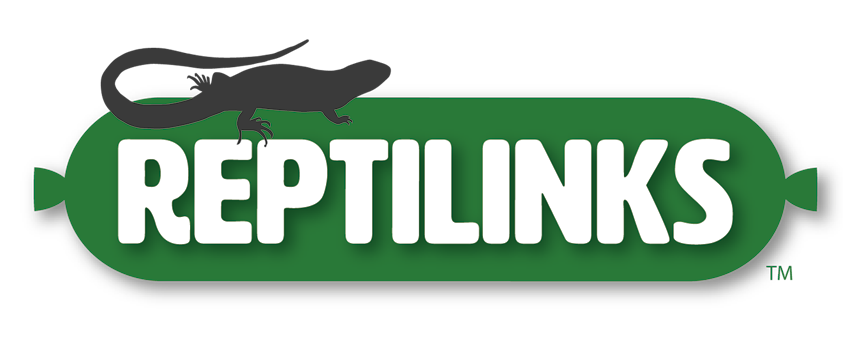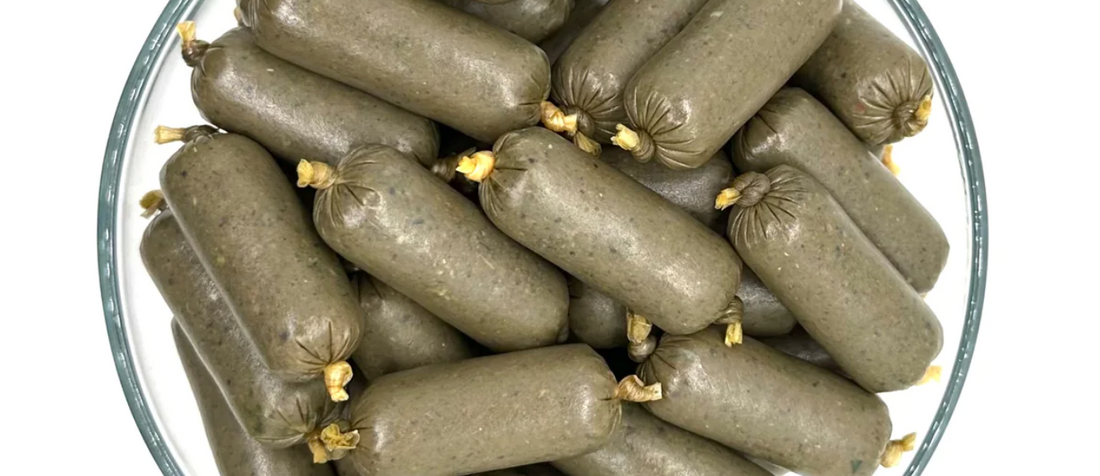One of the most frequent questions that people have about Reptilinks is whether they are digestible. After all, they’re enclosed in a casing that’s resilient and doesn’t break apart easily so that your reptile or amphibian can get a good grip! This is especially important for snakes, who need to maneuver their jaws around a solid prey item.
In order to understand how Reptilinks play into an animal’s digestion—and why your lizard, snake, or other pet might not be making the most of their food—you’ll first need to understand how reptiles digest their meals. An animal’s husbandry, or the way in which it’s cared for, plays a big role in whether an animal can do a good job of digesting its food, and by extension, whether it can gather the nutrients contained inside.
Are Reptilinks Digestible?
Yes! Reptilinks are fully digestible because they are made using all-natural collagen casings. Collagen is frequently found in the food items of many exotics. It is an amino acid chain that is responsible for many of the protein-based structures within the body, from ligaments to the skin itself. This natural product does not contain preservatives, chemicals, or other materials that are not already found in whole prey, which is why animals that consume collagen as part of their natural diets should have no problem digesting Reptilinks.
Why Reptiles Might Struggle with Digestion
While it’s true that a reptile’s digestive tract can be a powerful thing (some can break down whole bones, after all!), sometimes things get a little out of whack. Keepers may notice that their reptile’s stool is becoming loose, particularly smelly, or even has undigested remnants of food. Maybe they’re straining to go or even suffer a prolapse because they’re constipated. In most cases, these signs of improper digestion can be traced back to husbandry—the way the animal is being taken care of. Some of the primary reasons why a reptile might not be digesting its food well include:
A Lack of Proper Heat
The temperature at which you keep your animal is one of the biggest factors in how well it can digest its food. Each species will have its own requirements; some thrive at room temperature, while others require extremely hot basking areas. No matter what level of warmth your animal requires, it’s important to ensure they have access to it consistently. Heat helps digestion in multiple ways.
First, it facilitates muscular movement. Think about when your hands get very cold. Your fingers can feel stiff, and they might not respond as quickly or as accurately as you’re used to, right? The same thing is true of a reptile’s digestive system. If it’s cold, it can’t perform peristalsis as effectively—that’s the wave-like movements of the intestines that keep food progressing through the digestive system. Heat makes it easier for muscles to move.
Heat also helps to break down the food itself. Just like your own food lasts longer if you store it in the fridge, a cold belly will not be able to break down the food items themselves as efficiently. Thus, larger, undigested portions may make their way through the entire tract and come out in the feces.
Insufficient UV Exposure
Not all animals require ultraviolet exposure in order to stay healthy. However, many do, and those who soak up UV radiation in their natural habitat might find their digestion compromised if they don’t have adequate UV lighting in captivity.
Ultraviolet light is the pathway through which a reptile’s body synthesizes vitamin D. You can supplement vitamin D through dusting, gut-loading, and more, but without the appropriate amount of ultraviolet light, very little of it is usable by the body. Just like you, your animal has an intestinal microbiome made of hundreds of thousands of microorganisms. These organisms need vitamin D in order to survive—and so, if your pet isn’t getting enough UV exposure, they won’t have healthy, diverse intestinal flora either. Since intestinal microorganisms are partially responsible for breaking down food, your animal might have a hard time digesting without the right UV.
Low Humidity or Dehydration
Whether you keep an arid desert species or an amphibian that can’t survive outside of the pond, your animal needs consistent hydration and appropriate humidity. If it’s too dry, or if they don’t have access to clean water to drink, their body will start to suffer—and the intestines are one of the first places to feel the effects.
Moisture is part of what forms the feces; in fact, in humans, an average of 74.6% of the average stool sample is purely water. This moisture does a lot to bulk up the feces and ensure that the peristalsis of the intestines can grab and move it smoothly. In addition, when the body is dehydrated, the role of the intestinal tract is to gather up as much water as possible to fuel your animal’s life processes, such as maintaining correct blood pressure and heart function. Thus, any moisture remaining in the stool sitting within the digestive system will be sucked out by the intestines to be used elsewhere—otherwise, it would escape with the feces, and a dehydrated animal can’t allow that to happen!
As a result, the stool becomes very dry and compact, leading to constipation. In reptiles, extended periods of constipation can result in impaction, when stool is unable to pass further into the intestines and later out the vent. This can be a life-threatening condition that results in your animal being unable to eat or properly digest its food as fecal matter continues to build up in its belly.
A Lack of Enrichment
All of the above elements of an animal’s enclosure have to do with measurable metrics, like heat and moisture. However, as a keeper, you can also boost your reptile or amphibian’s digestion by making sure it has access to an enriching, engaging life. This is good for the brain and mental health, but it has physical impacts too.
Digestion utilizes gravity to increase efficiency by moving food items, digestive acids, and fecal boluses through the intestines in response to an animal’s position. Further, when animals move and explore, they’re stimulating their stomachs and intestines, helping the natural rhythms of their body in the same way that someone might massage their stomach to help relieve constipation pain. When reptiles have access to enriching environments that keep them active and moving, their digestion improves as a result. So make sure your pet has plenty of varied terrain, climbing or swimming opportunities, and ways to go up and down in a manner that is safe and appropriate for their species!

